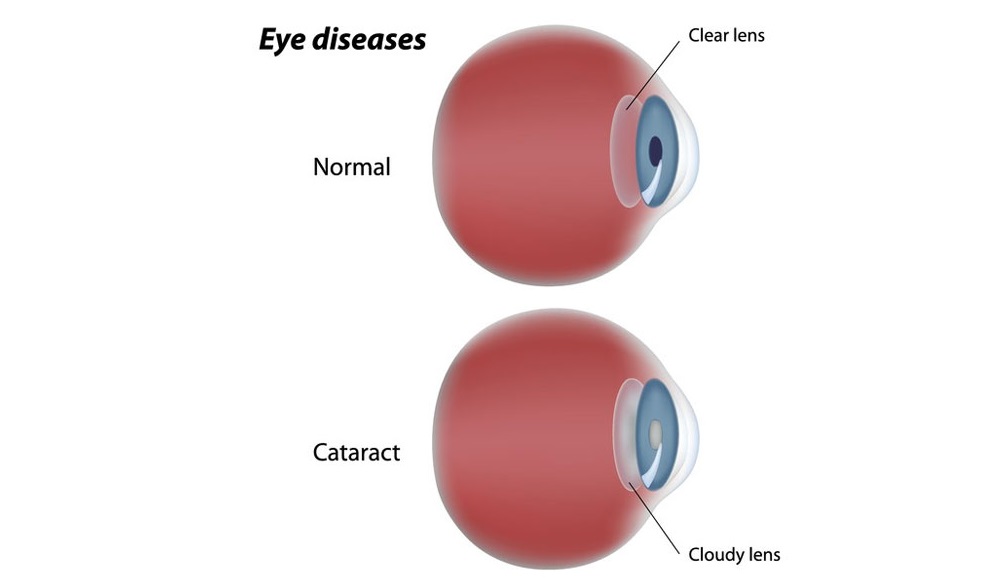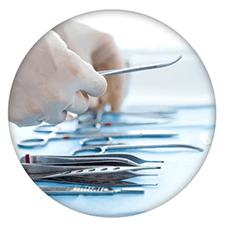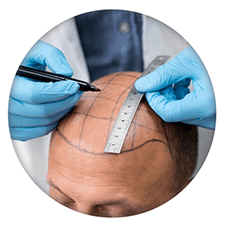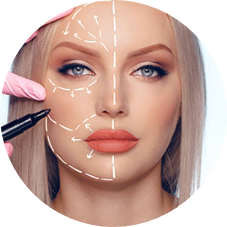Cataract Surgery

For those who are involved with cataract, the good news is cataract surgery in Iran is a common procedure due to different reasons. But before talking about cataract surgery in Iran, let’s talk about what is it. One of the most important inner parts of the eye is the lens; a small transparent disc. The moment this lens starts producing cloudy patches, the vision gets blurry and cataracts will be created.
At younger ages, the eye lens is like clear glasses; smooth and transparently visible. Basically, the essential feature of eye lenses is their transparency. But as we get older, these lenses got covered with a cloudy layer and become like steamy glass in the bathroom.
A cataract is a condition in which the eye lenses are blurred or clouded. Cataract interferes with vision and in 99.99% of cases, the natural eye lenses would be replaced by artificial lenses or intraocular lenses. This procedure is called Cataract surgery, which is a very common surgery, with a 97 % to 98 % success rate.
In the eye, light passes through the clear lens to the retina. To get a fast image, they must be clear lenses. If the lens is covered by a cataract, the image captured by the retina will be blurry and the vision will be blurred. The amount of vision impairment depends on the amount of shadow cast by the cataract on the lens. In the following, everything about cataract surgery in Iran, how it works, and other aspects of it will be precisely explained.
Cataract Surgery in Iran
What is the of Cataract Disease?
Cataracts occur more often in old age and are very common in the elderly. By age 80, more than half of people have some stages of cataracts or have had surgery on one or both eyes. By age 95, this rate increases to nearly 100 percent. This disease may occur in one or both eyes.
People with this disease in one eye usually experience it in the other eye as well. Cataracts are not contagious and cannot spread from one eye to another or from person to person. This disease is not painful and does not cause itching and redness of the eyes.
Although this disease is reversible in most patients, it is still the most common cause of blindness in the world due to age. Primarily because many third-world countries lack proper surgical services, the number of patients who become blind is higher. With the increase in life expectancy in developed countries and despite modern technologies and new methods, the treatment of cataract disease is progressing.
Types of Cataracts
There are different types of cataracts, some of which are not age-related.
Nuclear Cataract: One of the most common types of cataracts is nuclear cataracts, which affects mostly elderly people. This type of cataract, as its name suggests, causes the nucleus or center of the eye lens to become cloudy, and over time, a yellow or brown color appears in the eye. People with nuclear cataracts cannot see objects clearly, and will also see a halo of light around bright objects.
Cortex Cataract: In this case, the outer edges of the eye lens, called the cortex, are deformed and white spots appear on the eye. Intense and dazzling radiation is the most important characteristic of cortex cataracts. This radiation is so intense that it becomes difficult for people to see at night.
Secondary Cataract: This type of cataract may develop after eye surgery due to conditions such as glaucoma or diabetes.
Posterior Subcapsular Cataract: Another type of cataract can be considered posterior subcapsular cataract, during which a person’s near vision is affected. This type of cataract develops more quickly and its symptoms appear over several months.
Cataract Under the Anterior Capsule: This condition refers to any damage or inflammation of the eye such as eczema. A person’s vision is affected by this type of cataract, which can be very dangerous.
Zonular Cataract: Another type of cataract is called zonular, which affects mostly children and usually involves both eyes. This condition initially appears as white spots in the lens of the eye and gradually covers the entire lens of the eye.
Traumatic Cataracts: Many injuries and injuries related to the eye may cause cataracts for several years.
Cataracts Caused By Radiation: UV rays from the sun can cause cataracts, so people who are exposed to sunlight for a long time should definitely wear sunglasses.
Congenital Cataracts: A child may have cataracts at birth due to genetic reasons or as a result of the mother contracting a disease during pregnancy such as measles. Congenital cataracts usually do not affect the vision of both eyes, but if they do, surgery may be required.
The Causes of Cataracts
In general, various reasons have been introduced for cataract disease. The main causes of cataracts are:
Aging, taking some special drugs such as common drugs for the treatment of arthritis and lupus, eye surgery, damage to the eyes due to various factors, spending a lot of time in the sun without using an eye protector such as sunglasses, smoking, being in Exposure to ultraviolet rays, some diseases such as diabetes, radiation therapy, etc.
Some other factors such as consumption of alcoholic beverages, high blood pressure, family history of cataracts, obesity, and overweight, and previous eye injuries can also be considered factors that increase the risk of cataracts.
Cataract Diagnosis
Anyone who has vision problems should visit a doctor, then the doctor will refer the person to an ophthalmologist or an optometrist depending on the type of problem. In order to diagnose cataracts, a specialist doctor examines the person’s vision completely and performs a series of general tests. In order to diagnose cataracts, the doctor usually takes a vision test from the person suspected of this disorder, by placing an object or writing in different parts of the room and asking the person to describe what he sees, as well as evaluating the person’s vision at different distances.
Another method for diagnosis is to use a slit lamp microscope. The doctor examines lens problems and different parts of the eye using a special microscope. In this method, the pupils are dilated for a better examination of the back of the eye, where the retina and optic nerve are located. Other tests your doctor may perform include checking your sensitivity to bright lights and your perception of colors.
Cataract Treatment
If the cataract is mild, surgery may not be needed. For example, stronger glasses and more brightness may be effective in improving vision. The following tips may help people who are not yet ready for surgery:
- Make sure your glasses have the most accurate prescription possible
- Use a magnifying glass to read
- Try to use brighter bulbs such as halogen lamps for the home
- Use sunglasses to reduce glare on sunny days
- Avoid driving at night
Note that these measures are temporary, as cataracts gradually progress and vision worsens as a result. As daily activities become more difficult due to blurred vision, surgery may be required, as this procedure is usually safer and more effective.
How Does Cataract Surgery Work?
Cataracts develop slowly and are usually seen in people over 50 years of age, although young people can also be affected by this disorder. For the time being, there is no prevention for cataracts, but wearing sunglasses and not smoking may help prevent it from progressing. In the meantime, to remove the lens and replace it with an artificial lens method, surgery is the only available treatment option.
Today, cataract surgery is a simple type of procedure and it is one of the most common types of the eye surgery process, and the only effective treatment for severe cataracts is surgery, of course, anyone suffering from this disorder does not need surgery. The doctor recommends surgery to treat cataracts in the following cases:
- hard to see
- Inability to drive or difficulty driving
- A problem when leaving home
- It is difficult to recognize people’s faces
- Having trouble doing personal things
- Having trouble watching TV
Patients taking alpha-blocker drugs should be aware that these drugs may increase the risk of cataract surgery.
What Can Be Expected from The Surgery?
Preoperative evaluation: Before the operation, the specialist evaluates the patient’s eye and general health, and the eye number is carefully measured so that the artificial lenses can be replaced correctly.
Pre-operative measures: Eye drops are used just before the operation to dilate and enlarge the pupil of the eye. Sometimes the eye drops contain anesthesia or the doctor may inject local anesthesia into the tissue around the eye. When the anesthesia takes effect, the target area becomes numb and the patient will not feel anything. During the surgery, they only feel light but are unable to see what is happening. Cataract surgery is usually a simple surgery and the patient returns home the same day.
In the following, we will mention the expectations that a person can have during surgery:
- The doctor usually gives medicine to help the person relax.
- The doctor may use anesthetic drops or injections to numb the person’s eye.
- During the procedure, the person is awake and may notice the general movements of the surgery, but generally, they will not be able to see the surgeon’s actions.
- The surgeon makes small incisions in the eye to access the lens, then removes the lens and replaces it with an artificial lens.
- Surgeries performed today typically do not require stitches because the wound heals on its own.
- After the operation, the surgeon puts a protector on the patient’s eye and transfers him to the ward, so that he gradually recovers.
- Cataract surgery is very quick and simple and usually takes about 15 minutes.
Risks And Complications of Surgery
As mentioned, cataract surgery is an outpatient procedure in which local anesthesia is used, which is why experts consider this procedure to be safe. However, this surgery, like any other surgery, may have risks or complications for the patient, so a person should talk to his doctor about any possible complications before deciding to undergo cataract surgery. Some of the common complications of cataract surgery are:
- Inflammation of the cornea and eye
- Eye bleeding
- Fluid accumulation in the retina
- Retinal detachment
- Pressure behind the eyes
- drooping eyelid
- Dislocation or movement of the implanted lens
Everybody may already know that having cataract surgery when the patient is in a certain condition may increase the risks and complications. For example, cataract surgery in a person with age-related macular degeneration (AMD) is at risk of blindness. People with AMD must have a consultation with their doctors about the possible risks and benefits of the operation before deciding on surgery. Also, some basic eye problems such as damage to the retina may appear after the operation, so these things should be considered. Before performing the surgery, he asked the expert doctor about the advantages and disadvantages of the surgery.
If a person does not experience any side effects after surgery, his vision will improve and he will see much better and more clearly, but if a person notices the side effects of the surgery, he should report the symptoms to his doctor as soon as possible. Some people may develop secondary cataracts after surgery. When this happens, the lens membrane becomes opaque. According to the statistics of the American Optometric Association, up to 50% of people who undergo cataract surgery may suffer from this disease. Secondary cataracts are treatable, and typically, the doctor uses laser therapy to create an opening in the opaque areas of the eye.
Cataract Surgery in Iran with Green Life Tour
For those who are looking for the best surgeons and doctors and equipped treatment centers in return for very low and affordable prices, Green Life Tour provides the best options available to have a safe treatment and entertaining journey along with it.
You can always have access to all our services in one place, Click here!
































